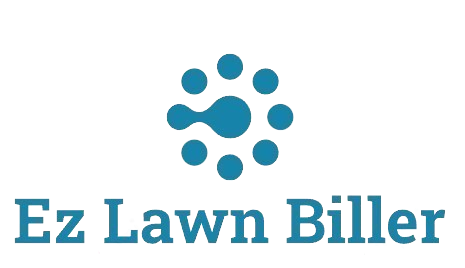Maximize efficiency in your lawn business by optimizing your routes with our comprehensive guide. Save time and money while enhancing customer satisfaction.
Step-by-Step: How to Optimize Routes in Your Lawn Business
Optimizing routes in your lawn business can significantly improve your efficiency and customer satisfaction. This article delves into effective strategies and tools to enhance your route planning. By the end, you will understand the importance of route optimization, the tools available, and practical steps you can take to streamline your operations.
In the competitive world of lawn care business, providing timely and efficient services is crucial to retaining customers and improving profitability. As a lawn care service provider, your ability to deliver quality service hinges not only on your skills but also on how effectively you can manage your logistics. Route optimization plays a pivotal role in this, allowing you to serve more clients while minimizing fuel costs and labor hours.
This article outlines a step-by-step approach to optimizing routes for your lawn care services. From leveraging technology to understanding the importance of data analysis, we will cover various techniques that can help you enhance your operational efficiency. Whether you run a small team or a large operation, improving your routing strategy can positively impact your bottom line.
Understanding Route Optimization
Route optimization involves determining the most efficient path to reach multiple destinations in the least amount of time and at the lowest cost. In lawn care, this means planning your daily schedule in a way that minimizes travel time between job locations, reduces fuel consumption, and maximizes the number of clients you can serve each day.
Statistics show that businesses can save up to 20% on fuel costs by implementing effective route optimization strategies. By calculating the best possible routes, you can also increase productivity, allowing your team to focus on what they do best—providing quality lawn care services.
For example, a lawn care company serving multiple neighborhoods can benefit significantly from route optimization. Instead of zigzagging across town, a well-planned route can ensure that technicians handle adjacent clients consecutively, reducing unnecessary travel and enhancing service delivery.
Leveraging Technology for Route Planning
In today’s digital age, various software solutions can facilitate route optimization for your lawn business. Tools such as GPS navigation systems and specialized lawn service software can provide real-time data and route analytics to streamline your operations.
One popular option is the use of lawn billing software, which not only assists in managing your invoices but also includes features for route planning. Implementing a lawn service app can help your team access optimized routes on their mobile devices, ensuring they always have the best path available. With these tools, you can automate the route planning process, saving time and effort.
Moreover, many of these software solutions allow you to track the performance of your team on the go. This means that if a technician is running behind schedule, you can dynamically adjust routes in real time to ensure clients are still serviced promptly.
Data Analysis for Better Decision Making
Using data analysis to inform your route optimization strategies can lead to better decision-making. By analyzing historical service data, you can identify patterns in job durations, peak traffic times, and client preferences. For instance, if you notice that certain neighborhoods are consistently serviced faster than others, you can prioritize these areas during peak times to maximize efficiency.
Additionally, employing a lawn company computer program can help you maintain a database of customer locations, service history, and feedback. This information can be invaluable in refining your routing strategies over time. You may also analyze fuel costs associated with different routes, allowing you to make cost-effective decisions that benefit your bottom line.
Furthermore, analyzing your workforce’s performance can help you assign tasks based on each technician’s strengths. For example, if one of your employees is particularly familiar with a specific neighborhood, it makes sense to assign them more jobs in that area, thereby increasing efficiency.
Implementing a Test Run
Before fully committing to a new route optimization strategy, consider conducting a test run. This involves planning a route using your new strategy for a day or week and comparing the results against your previous performance.
During the test run, track key metrics such as time taken for each job, fuel consumption, and customer satisfaction ratings. This real-world data will help you assess the effectiveness of your new routing method and make necessary adjustments before implementing it across your entire operation.
A successful test run can serve as a solid foundation for a broader rollout. This approach minimizes risk and allows you to refine your strategy based on actual results rather than assumptions.
Best Practices for Continuous Improvement
Once you have established a route optimization strategy, it’s essential to maintain a focus on continuous improvement. Regularly review your routing practices and solicit feedback from your team on potential improvements. They are often the first to identify inefficiencies in the current system.
Consider utilizing customer feedback as well. If clients express dissatisfaction with service times or missed appointments, use this information as a guide for refining your routes. Implementing a customer relationship management system integrated with your lawn service software can also help you track and analyze this feedback effectively.
Additionally, stay updated with technological advancements in route optimization. Many apps and software solutions frequently update their features to improve user experience and efficiency. By keeping an eye on the latest trends, you can ensure your business remains competitive while enhancing service delivery.
Incorporating Client Scheduling
Effective client scheduling is another critical component of route optimization. A well-structured scheduling system not only allows for efficient routing but also enhances customer satisfaction. Clients appreciate knowing specific time windows for when they can expect services.
Implementing recurring billing and scheduling features in your lawn service app can help streamline this process. By automatically scheduling services and sending reminders to clients, you can minimize last-minute cancellations and no-shows, allowing for a more efficient routing strategy.
Furthermore, scheduling services based on location can help maximize productivity. For instance, if you have multiple clients in the same area requesting services on the same day, grouping those jobs together can save time and fuel.
Utilizing Fuel Management Strategies
Besides optimizing routes, it’s essential to consider fuel management strategies as part of your cost-saving measures. Fuel is one of the most significant expenses in a lawn care business, and managing it effectively can lead to substantial savings.
Utilizing fuel-efficient vehicles and training your team to practice smooth driving techniques can help reduce fuel consumption. Additionally, consider planning your routes to avoid congested areas during peak traffic hours.
Incorporating route optimization software that tracks fuel consumption can also provide insights into how much fuel is being used on specific routes. This information can inform future route planning and decision-making processes.
Conclusion
Optimizing routes in your lawn business is a vital strategy for enhancing efficiency, reducing operational costs, and improving customer satisfaction. By leveraging technology, analyzing data, and implementing best practices, you can create a sustainable routing strategy that benefits both your business and your clients.
As you implement these strategies, remember that continuous improvement is key. Regularly assess your routing practices, gather feedback, and stay informed about new technologies in the market. With these proactive measures, your lawn care business will be well-positioned to thrive in a competitive landscape.
Ready to take your lawn business to the next level? Explore how tools like [Lawn Biller Software](https://ezlawnbiller.com/) can help streamline your billing and route optimization processes. Don’t just manage your lawn care business; optimize it for success!




